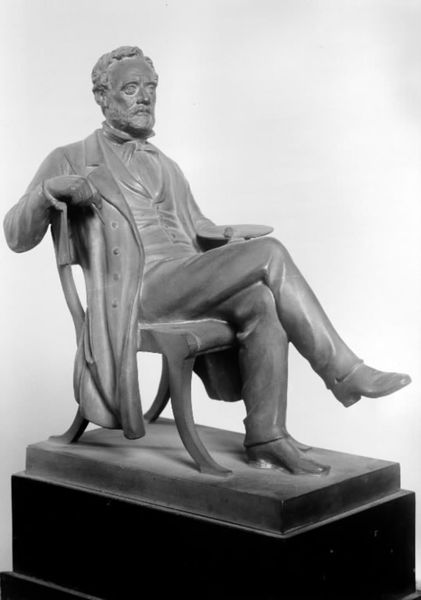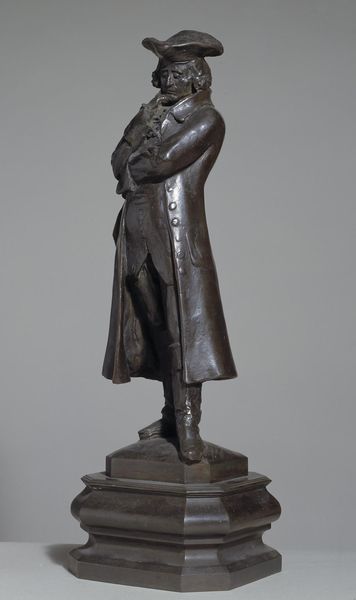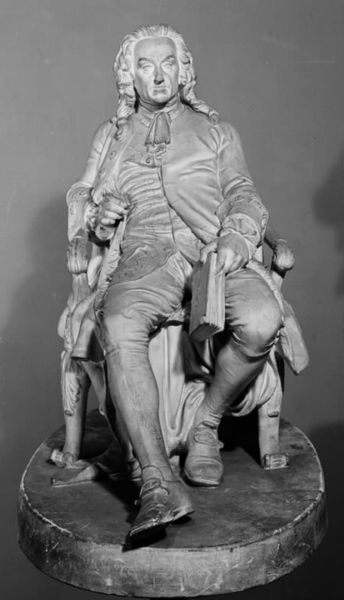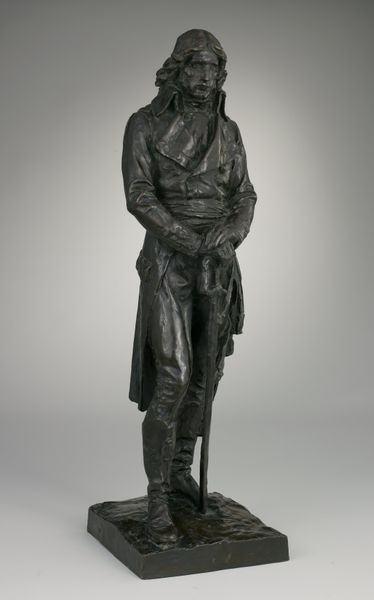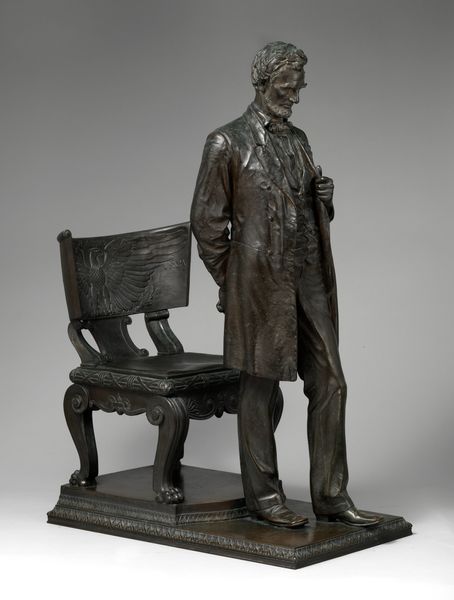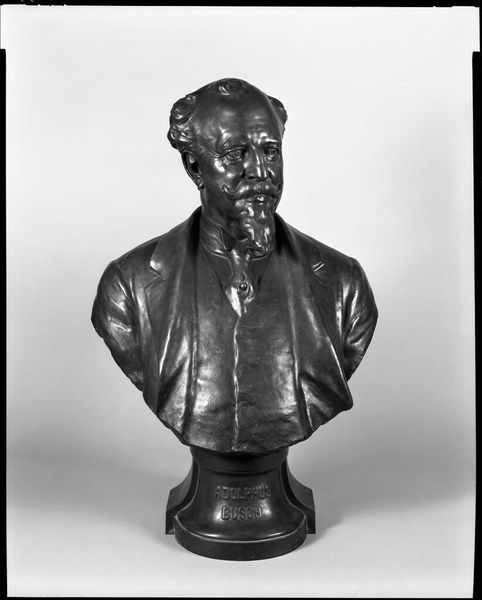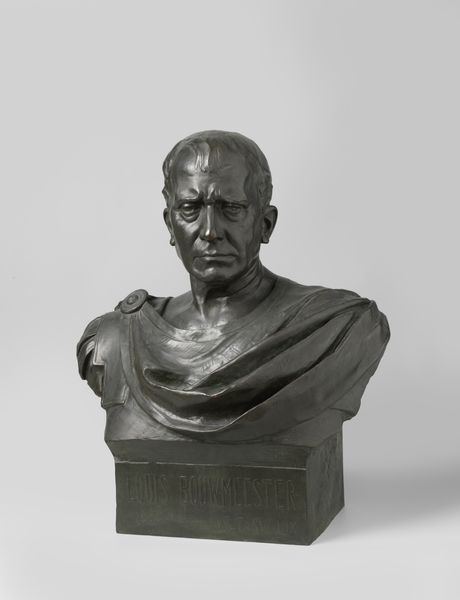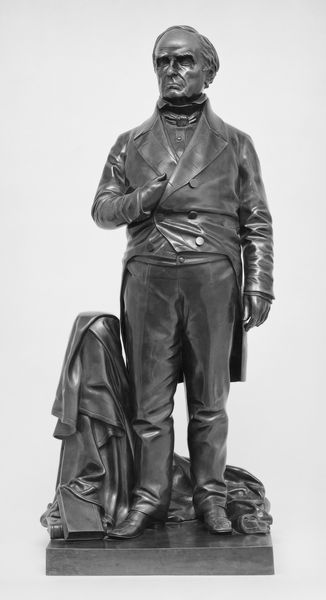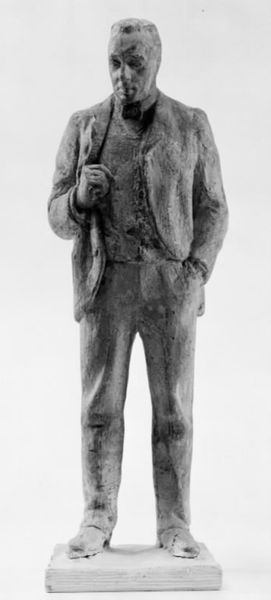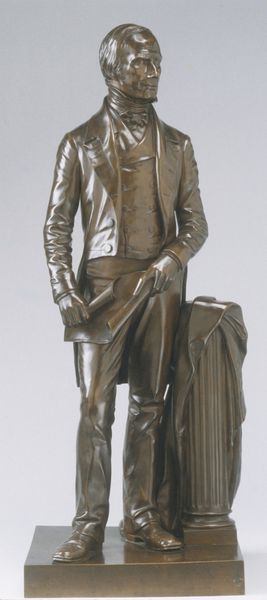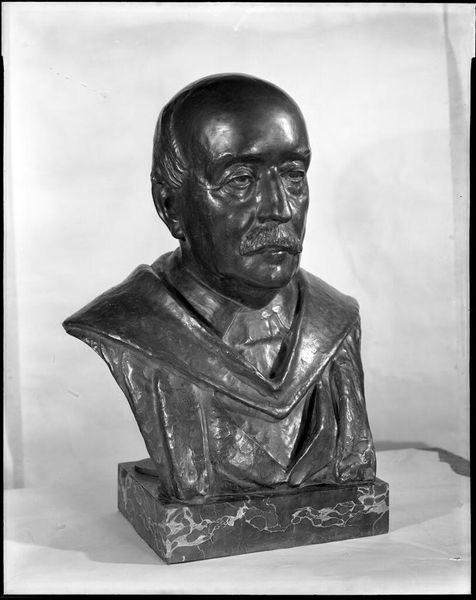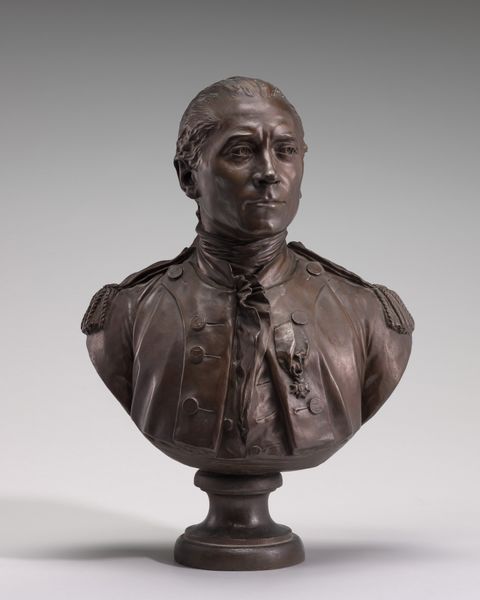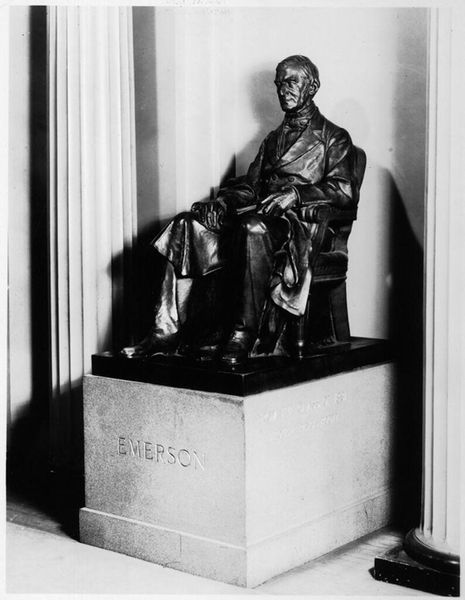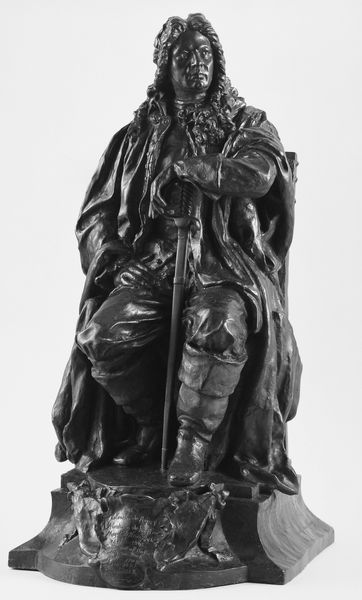
Forfatteren Søren Kierkegaard siddende i en stol, læsende i en bog 1879
0:00
0:00
bronze, photography, sculpture
#
portrait
#
16_19th-century
#
sculpture
#
bronze
#
photography
#
sculpture
#
realism
Dimensions: 29.3 cm (height) x 16 cm (width) x 22.6 cm (depth) (Netto)
Curator: Here we have a bronze sculpture, completed in 1879 by Louis Hasselriis. It’s titled "Forfatteren Søren Kierkegaard siddende i en stol, læsende i en bog" which translates to “The Author Søren Kierkegaard Sitting in a Chair, Reading a Book.” Editor: That's quite a title! Immediately, the downward gaze captures me. You can feel the weight of thought in his posture, the burden of existential contemplation, perhaps. Curator: Indeed. Hasselriis sculpted this nearly 25 years after Kierkegaard’s death. Think about how Denmark, still grappling with his controversial ideas, might receive such a public memorialization. Editor: Memorialization yes, but this Kierkegaard looks far from celebrated! The subdued tones of the bronze and his solemn posture tell a story of intense internal dialogue rather than public triumph. The detail on the face…it’s beautiful, though tinged with a bit of melancholy. Curator: And the context! The sculpture enters public space as Denmark is establishing its national identity, its philosophical and cultural heritage. A figure like Kierkegaard, so critical of societal norms, presented a challenge. It had to simultaneously acknowledge him and neutralize any potential unrest his radical thought could provoke. Editor: Neutralize! Is that why the artist chose to depict him engrossed in his work, self-contained, even a bit slumped in the chair? It suggests a world existing solely inside his mind, safely tucked away. Still, I sense something revolutionary here; maybe it’s just how his intense presence leaps across time. Curator: It reflects the struggle inherent in monuments then: public memory vs. individual radicalism. It seems to say "We acknowledge this giant, now let him be." By depicting him in quiet contemplation, his potential for disruption gets softened, even mythologized. Editor: So, less rebel and more relic? Still, it's thought-provoking to be near a monument so laden with conflicting meanings, still sparking with energy, frozen but present, writing…and here we are, centuries later, wondering what’s on that page. Curator: Hasselriis certainly captured the spirit of internal reflection that defined Kierkegaard’s life and legacy—a tension that perhaps makes the work more potent and thought-provoking today. Editor: Absolutely, and now I have a new philosopher to look into! That's art doing its magic right there!
Comments
No comments
Be the first to comment and join the conversation on the ultimate creative platform.
